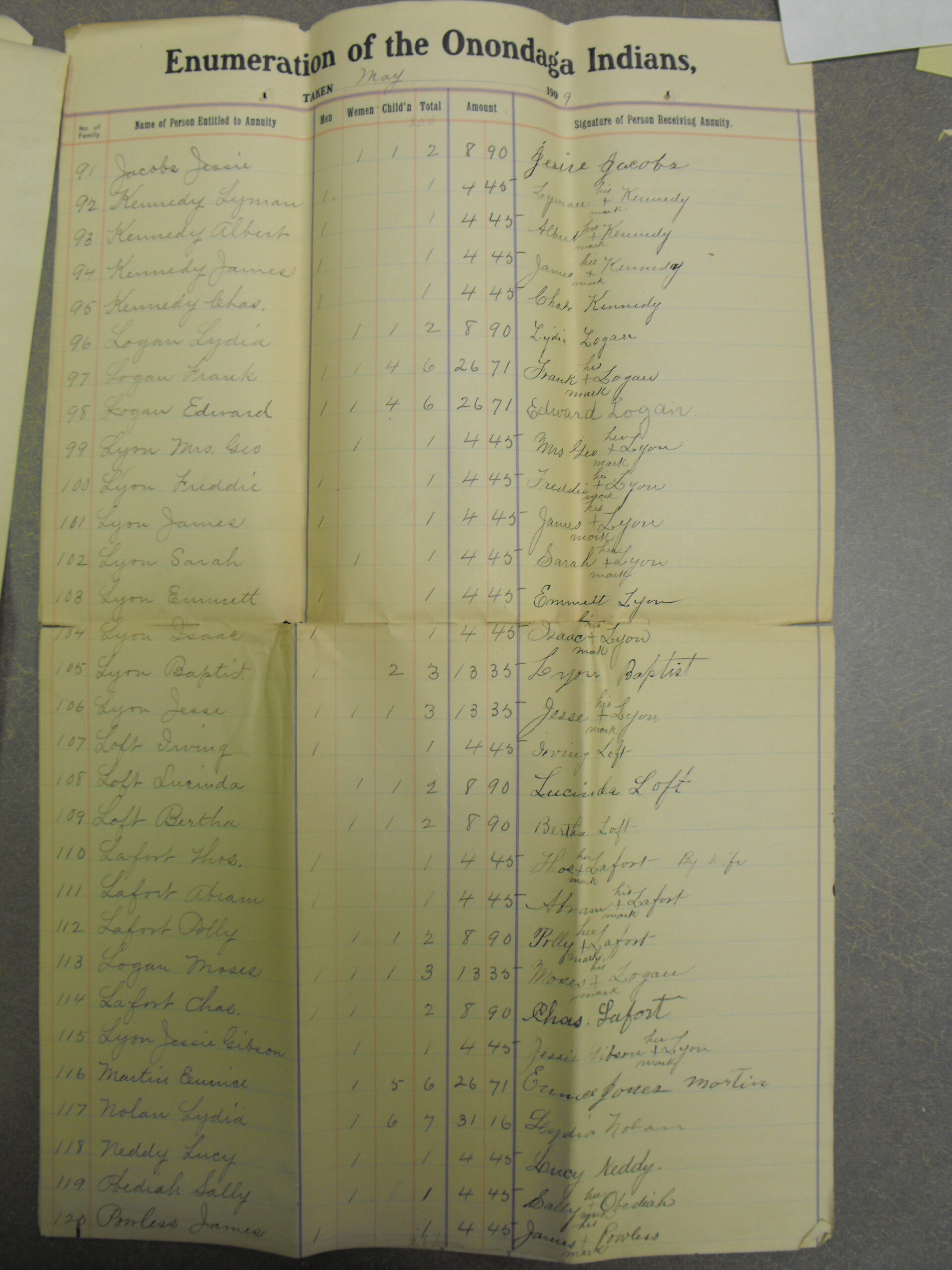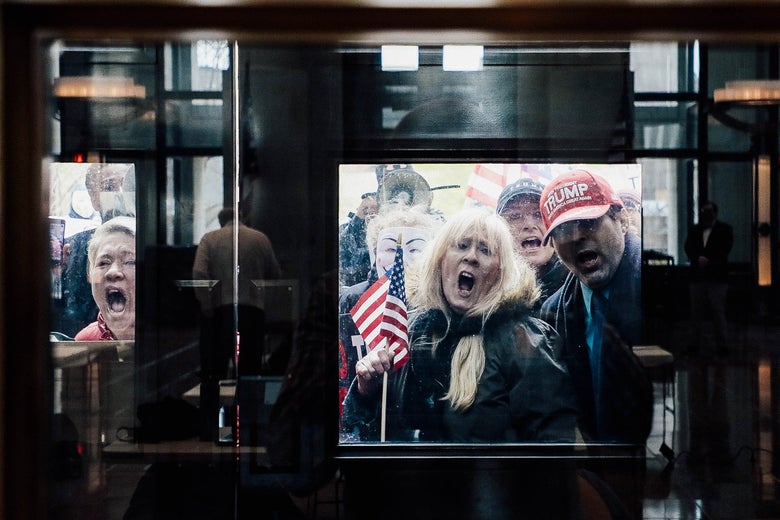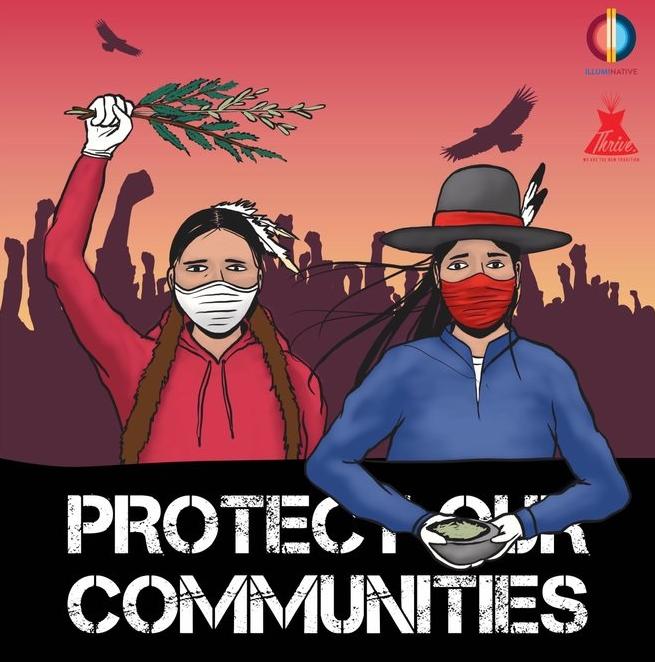I have just completed reading the first batch of papers from my course on American Indian Law and Public Policy. I require all the students to complete a current events project. The requirements for the assignment is that they have 20 sources (which I have defined broadly owing to the students’ inability to in-person library research or make use of Interlibrary Loan); that they consult with me on the topic beforehand (most did so before the campus shut down); and that they try to write about ten pages. I cannot cover everything in class and, I tell the students, this is an opportunity for them to learn more about a subject that interests them. The added bonus is that I always learn a thing or two from their projects.
This semester, for obvious reasons, a number of students focused on COVID-19 and the Coronavirus and the impact of the epidemic on Native American communities. Because many of you who teach Native American history will have students interested in this issue, particularly with students’ awareness of the long history of epidemic and chronic disease in Indian Country, I decided to compile a bibliography of articles that you and your students might find helpful. This is not exhaustive, and I am sure that we may have missed some stories, but I hope you find this helpful. It is only a first step. Beginning tomorrow I will tweet out all the stories documenting Indian Country’s confrontation with the COVID-19 pandemic that I manage to stumble across. Be careful out there, and stay safe.
Abourezk, Kevin. “’We Are Staying on Top of It’: Oglala Sioux Tribe Declares Coronavirus Emergency.” Indianz.com, March 11, 2020.
https://www.indianz.com/News/2020/03/11/we-are-staying-on-top-of-it-oglala-sioux.asp
Agoyo, Acee. “’Lives Are at Risk’: Coronavirus Cases Continue to Grow in Indian Country as Tribes Push for Action in Washington.” Indianz, March 19, 2020. https://www.indianz.com/News/2020/03/19/lives-are-at-risk-coronavirus-cases-cont.asp
Acee Agoyo, “Trump administration moves slowly on coronavirus funding for Indian Country,” Indianz.com, March 23, 2020,
https://www.indianz.com/News/2020/03/23/trump-administration-moves-slowly-on-cor.asp
Acee Agoyo, “Coronavirus relief coming to Indian Country with passage of bipartisan legislation,” indianz.com,March 26th, 2020, https://www.indianz.com/News/2020/03/26/coronavirus-relief-coming-to-indian-coun.asp
Acee Agoyo, “Indian Country plunges into uncertainty as coronavirus reaches their communities,” indianz.com, March 18, 2020,
https://www.indianz.com/News/2020/03/18/indian-country-plunges-into-uncertainty.asp
Acee Agoyo, “Indian Health Service works to distribute more coronavirus funding to tribes as cases continue to grow,” Indianz.com, March 24th, 2020,
https://www.indianz.com/News/2020/03/24/indian-health-service-works-to-distribut.asp
Barrera, Jorge. “COVID-19 Could Be ‘Devastating’ for First Nations, Says Matawa First Nations CEO | CBC News.” CBCnews , CBC/Radio Canada, 11 Mar. 2020, www.cbc.ca/news/indigenous/covid19-first-nations-housing-overcrowding-1.5494077.
Barrera, Jorge. “Doctor Says Pre-Existing Nursing Shortage Leaves Northern Ontario First Nations ‘Vulnerable’ to COVID-19″ CBC News.” CBCnews , CBC/Radio Canada, 18 Mar. 2020, www.cbc.ca/news/indigenous/covid-19-northern-ontario-1.5500780.
Becenti, Arlyssa “Workers Battle Coronavirus – and Jiní – at Epicenter.” Navajo Times, March 25, 2020.
https://navajotimes.com/coronavirus-updates/workers-battle-coronavirus-and-jini-at-epicenter/
Bennett-Begaye, Jourdan. “’We Are Not Ready for This’: Native American Tribes Struggle to Deal with Coronavirus.” The Salt Lake Tribune, March 4, 2020. https://www.sltrib.com/news/nation-world/2020/03/04/we-are-not-ready-this/
Bourque, Scott. “Navajo County Ranks 13th Worldwide For COVID-19 Infection Rate.” Fronteras, March 28, 2020.
https://fronterasdesk.org/content/1507036/navajo-county-ranks-13th-worldwide-covid-19-infection-rate
Brady, Benjamin R., and Howard M. Bahr. “The Influenza Epidemic of 1918–1920 among the Navajos: Marginality, Mortality, and the Implications of Some Neglected Eyewitness Accounts.” American Indian Quarterly , vol. 38, no. 4, 2014, p. 459., doi:10.5250/amerindiquar.38.4.0459.
Bryan Eneas, More Sask. “Indigenous communities take measures to prevent spread of COVID-19,” CBCnews, March 25th, 2020,
https://www.cbc.ca/news/canada/saskatchewan/indigenous-community-measures-preventing-covid-19-1.5510275
Cancryn, Adam. “Where Coronavirus Could Find a Refuge: Native American Reservations.” POLITICO, March 28, 2020. https://www.politico.com/news/2020/03/28/native-americans-coronavirus-152579 .
Carlson, Kirsten. “Tribal Leaders Face Great Need and Don’t Have Enough Resources to Respond to the Coronavirus Pandemic.” Chicago Reporter, March 27, 2020. https://www.chicagoreporter.com/tribal-leaders-face-great-need-and-dont-have-enough-resources-to-respond-to-the-coronavirus-pandemic/
Center for Disease Control and Prevention. “History of 1918 Flu Pandemic.” Centers for Disease Control and Prevention , Centers for Disease Control and Prevention, 21 Mar. 2018, www.cdc.gov/flu/pandemic-resources/1918-commemoration/1918-pandemic-history.htm
Dubois, Stephanie. “Maskwacis activates ‘medicine chest’ treaty clause, declaring state of emergency,” CBCnews, March 24th, 2020,
https://www.cbc.ca/news/canada/edmonton/maskwacis-state-of-emergency-medicine-chest-treaty-clause-covid-19-coronavirus-1.5507902
Laurel Morales. “Navajo Access to Water Compounds Response to
Coronavirus.” Arizona Public Media, March 26, 2020.
https://www.azpm.org/p/home-articles-news/2020/3/26/168576-navajo-access-to-water-compounds-response-to-coronavirus/
Deer, Jessica. “5 People including Hospital Personnel Test Positive for COVID-19 in Mohawk Community.” CBC.ca. Last modified March 24, 2020. Accessed March 28, 2020. https://www.cbc.ca/news/indigenous/5-people-including-hospital-personnel-test-positivefor-covid-19-in-mohawk-community-1.5508843?cmp=rss.
Ebbs, Stephanie and Cheyenne Haslet, “Indian Country Faces Higher Risks, Lack of Resources in COVID-19 Fight.” ABC NEWS, 3 April 2020.
Fonseca, Felecia. “Tribes Take Measures to Slow Spread of New Coronavirus.” ABC News. ABC News Network, March 21, 2020.
https://abcnews.go.com/Health/wireStory/tribes-measures-slow-spread-coronavirus-6972711712
Giago Davies, James. “It Was Called the ‘Spanish Flu.’ But It Killed Hundreds of Indians Too.” www.indianz.com/News/2018/05/24/it-was-called-the-spanish-flu-but-it-kil.asp.
Givens, Maria. “The Coronavirus Is Exacerbating Vulnerabilities Native Communities Already Face.” Vox. Vox, March 25, 2020.
https://www.vox.com/2020/3/25/21192669/coronavirus-native-americans-indians
Goldman, Kara N. “The White Scarf on the Door: a Life-Saving Lesson from the 1918 Flu.” STAT , 23 Mar. 2020, www.statnews.com/2020/03/23/white-scarf-door-lifesaving-lesson-1918-pandemic/.
Hedgpeth, Dana, Darryl Fears and Gregory Scruggs. “Indian Country, Where Residents Suffer Disproportionately from Disease, is Bracing for Coronavirus,” Washington Post, 4 April 2020.
Heinsius, Ryan. “COVID-19 Relief Package Includes $8 Billion for Tribal Assistance.” KNAU:Arizona Public Radio. Last modified March 27, 2020. Accessed March 28, 2020. https://www.knau.org/post/covid-19-relief-package-includes-8-billion-tribal-assistance.
Hollingsworth, Julia, et al. “Corona Virus Live Updates.” CNN World News , 22 Mar. 2020, www.cnn.com/world/live-news/coronavirus-outbreak-03-22-20/h_0ff44fe3fd52f6ea7471206d0b7ff501.
Horn, Matt, and Navajo Nation. “Navajo Nation Helps Provide Medical Supplies during COVID-19 Crisis.” AZFamily, March 26, 2020.
https://www.azfamily.com/news/continuing_coverage/coronavirus_coverage/navajo-nation-helps-provide-medical-supplies-during-covid–crisis/article_5dc62a0a-6fb5-11ea-af2f-3fbde1c350ef.html
Indian Health Service. “Disparities: Fact Sheets.” Newsroom , U.S. Department of Health and Human Services, Oct. 2019, www.ihs.gov/newsroom/factsheets/disparities/.
Kassam, Ashifa. “’Be Careful’: Spain’s Last 1918 Flu Survivor Offers Warning on Coronavirus.” The Guardian , Guardian News and Media, 22 Mar. 2020,
www.theguardian.com/world/2020/mar/22/be-careful-spains-last-1918-flu-survivor-offer s-warning-on-coronavirus.
Lakhani, Nina. “’Timing Is Critical’: Native Americans Warn Virus May Overwhelm Underfunded Health Services.” The Guardian. Guardian News and Media, March 20, 2020.
https://www.theguardian.com/us-news/2020/mar/20/coronavirus-outbreak-us-native-americans-health-services .
Lakhani, Nina. “Native American Tribe Takes Trailblazing Steps to Fight Covid-19 Outbreak.” The Guardian. Guardian News and Media, March 18, 2020. https://www.theguardian.com/us-news/2020/mar/18/covidcoronavirus-native-american-lummi-nation-trailblazing-steps
Laychuk, Riley. “Opaskwayak Cree Nation Declares State of Emergency, Takes Steps to Keep COVID-19 out of Community | CBC News.” CBCnews , CBC/Radio Canada, 19 Mar. 2020, www.cbc.ca/news/canada/manitoba/opaskwayak-cree-nation-state-of-emergency-covid-19-1.5502424.
Lee, Kurtis “No Running Water. No Electricity. On Navajo Nation, Coronavirus Creates Worry and Confusion as Cases Surge.” Los Angeles Times. Los Angeles Times, March 29, 2020.
https://www.latimes.com/world-nation/story/2020-03-29/no-running-water-no-electricity-in-navajo-nation-coronavirus-creates-worry-and-confusion-as-cases-surge
Malbeuf, Jamie. “Northern Alberta Community Limiting Access in Effort to Keep COVID-19 out | CBC News.” CBCnews , CBC/Radio Canada, 19 Mar. 2020, www.cbc.ca/news/canada/edmonton/janvier-wood-buffalo-security-covid-19-1.5502372.
Mapes, Lynda V. “As a Coronavirus Pandemic Sweeps the World, American Indian Communities Turn to One Another, Teachings.” The Seattle Times. The Seattle Times Company, March 24, 2020.
https://www.seattletimes.com/seattle-news/health/as-a-coronavirus-pandemic-sweeps-theworld-american-indian-communities-turn-to-one-another-teachings/13
Michels, Holly K. “Browning Works Together to Feed Kids in Time of Coronavirus.”
Independent Record. Last modified March 18, 2020. https://helenair.com/news/state-and-regional/browning-works-together-to-feed-kids-intime-
ofcoronavirus/article_4b4cdb52-2186-50f4-9aa6c3265330a4f7.amp.html?__twitter_impression=true.
Moulson, Geir, and Matt Sedensky. “Worldwide Coronavirus Infections Top 600,000.” Indian Country Today. Last modified March 28, 2020. Accessed March 30, 2020. https://indiancountrytoday.com/coronavirus/worldwide-coronavirus-infections-top-600-000-Jz6G7zW44k-RVZkMXw4Zbw.
(NCAI) The National Congress of American Indians. “The National Congress of American Indians Calls for More Attention to COVID-19 Impacts to Indian Country.” NCAI , 2020, www.ncai.org/news/articles/2020/03/18/the-national-congress-of-american-indians-callsfor-more-attention-to-covid-19-impacts-to-indian-country.
Newland, Bryan. “Opinion | Indigenous Americans Must Not Once Again Pay the Price for the Mistakes of Others.” The Washington Post. WP Company, March 25, 2020. https://www.washingtonpost.com/opinions/2020/03/25/coronavirus-social-distancing-could-devastate-tribal-communities/
Newton, Creede. “Navajo Nation: Fears of Hunger as Covid-19 Lockdown to Intensify.” Al-Jazeera.com. April 7, 2020.
Riley, Dr. Melissa. “Indian Health Services Is Ill-Prepared for the Coronavirus Crisis. Indigenous People Will Suffer.” Rewire.News. Last modified March 24, 2020. Accessed March 28,https://rewire.news/article/2020/03/24/indian-health-services-is-ill-prepared-forthe-
coronavirus-crisis-indigenous-people-will-suffer/.
Srikanth, Anagha. “How the Coronavirus Threatens Native American Communities.” TheHill, March 26, 2020.
https://thehill.com/changing-america/respect/diversity-inclusion/488458-how-the-coronavirus-threatens-native-american .
Trout, Lucas, Corina Kramer, and Lois Fischer. “Social Medicine in Practice: Realizing the American Indian and Alaska Native Right to Health.” Health and Human Rights 20, no. 2 (December 2018): 19-30. https://www.jstor.org/stable/26542057





